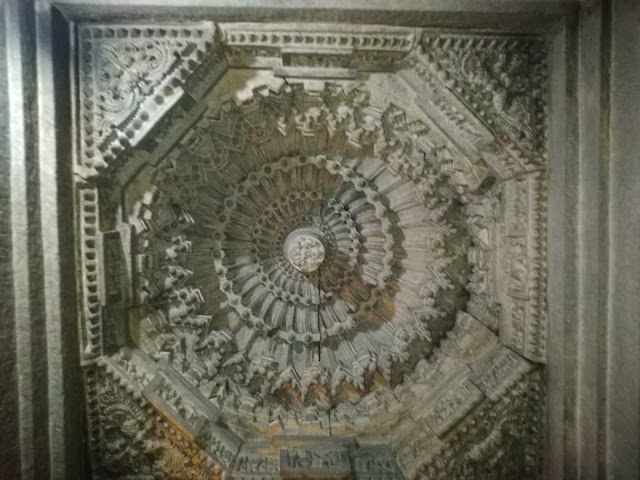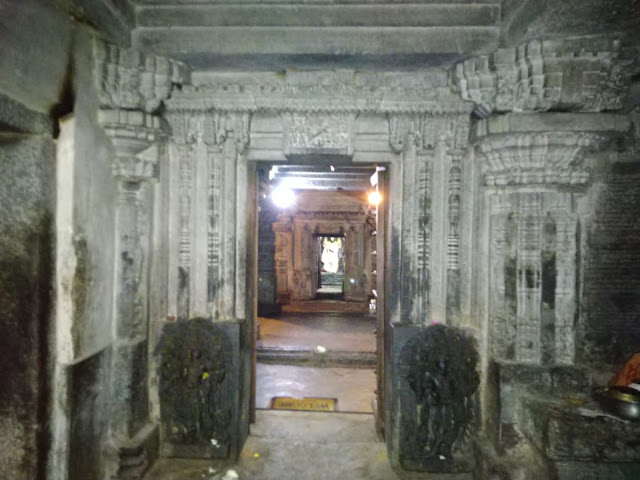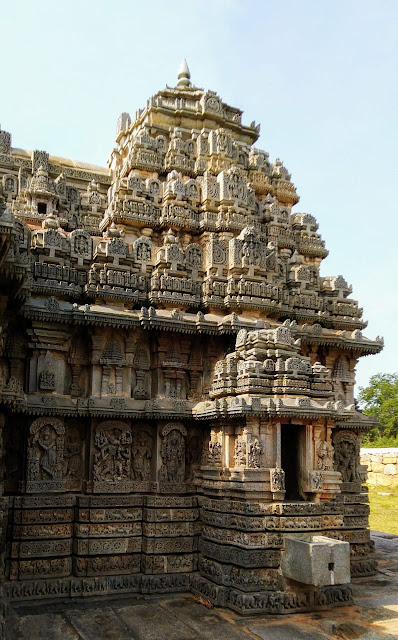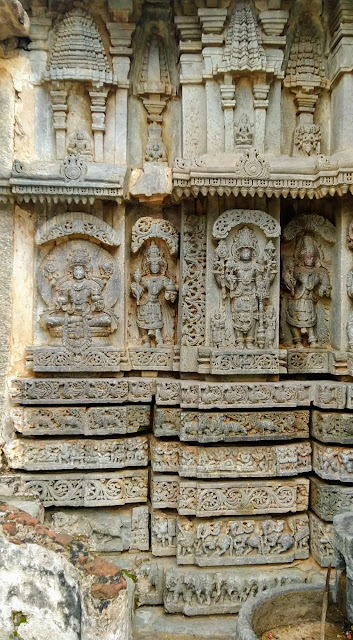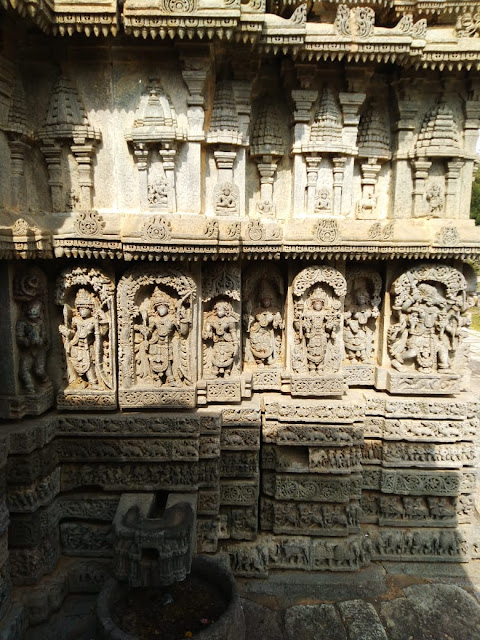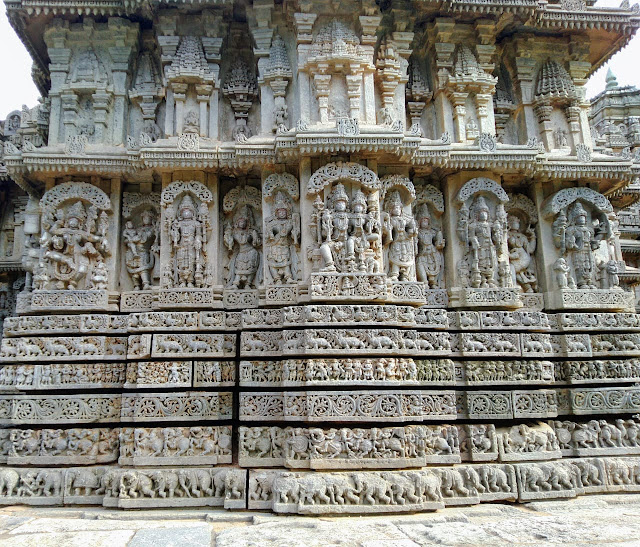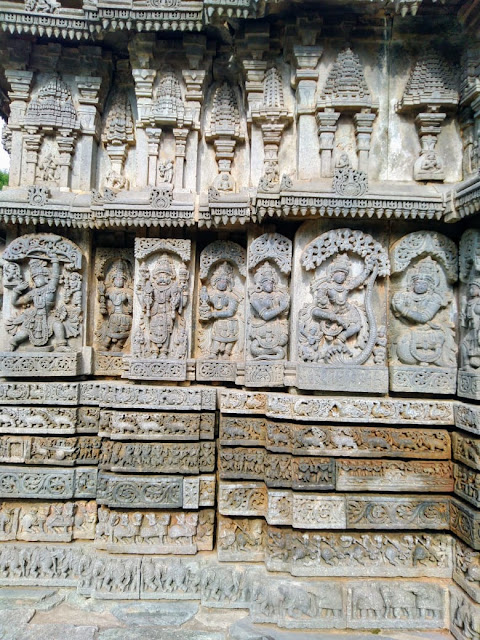The Sanctums
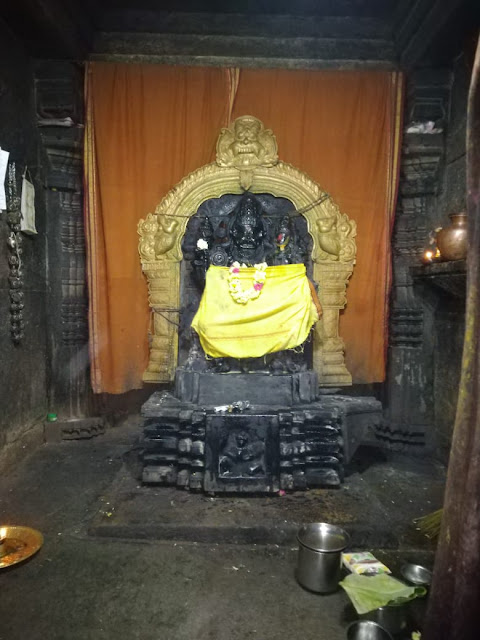
There are three sanctums, the temple being a TRIKOOTA ( ತ್ರಿಕೂಟ ).The South Cell has on a GARUDA PEETHA ( ಗರುಡ ಪೀಠ ) a beautiful image of VENUGOPALA ( ವೇಣುಗೋಪಾಲ ). The North Cell houses on a GARUDA PEETHA a LAKSHMEENARASIMH A ( ಲಕ್ಷ್ಮೀನರಸಿಂಹ ), seated in SUKHAASANA. The Central Cell facing east has an image of KESHAVA ( ಕೇಶವ ) ( S-C-G-P ) also on a GARUDA PEETHA. The image is about 4'6" in height. On the TORANA ( ತೋರಣ ) of each of the three images is carved the DASHAAVATAARAS ( ದಶಾವತಾರಗಳು ). A photo of each of the images in the sanctums is reproduced below. Lakshminarasimha in the Northern Cell Venugopala in the Southern Cell Keshava in the Central Cell
